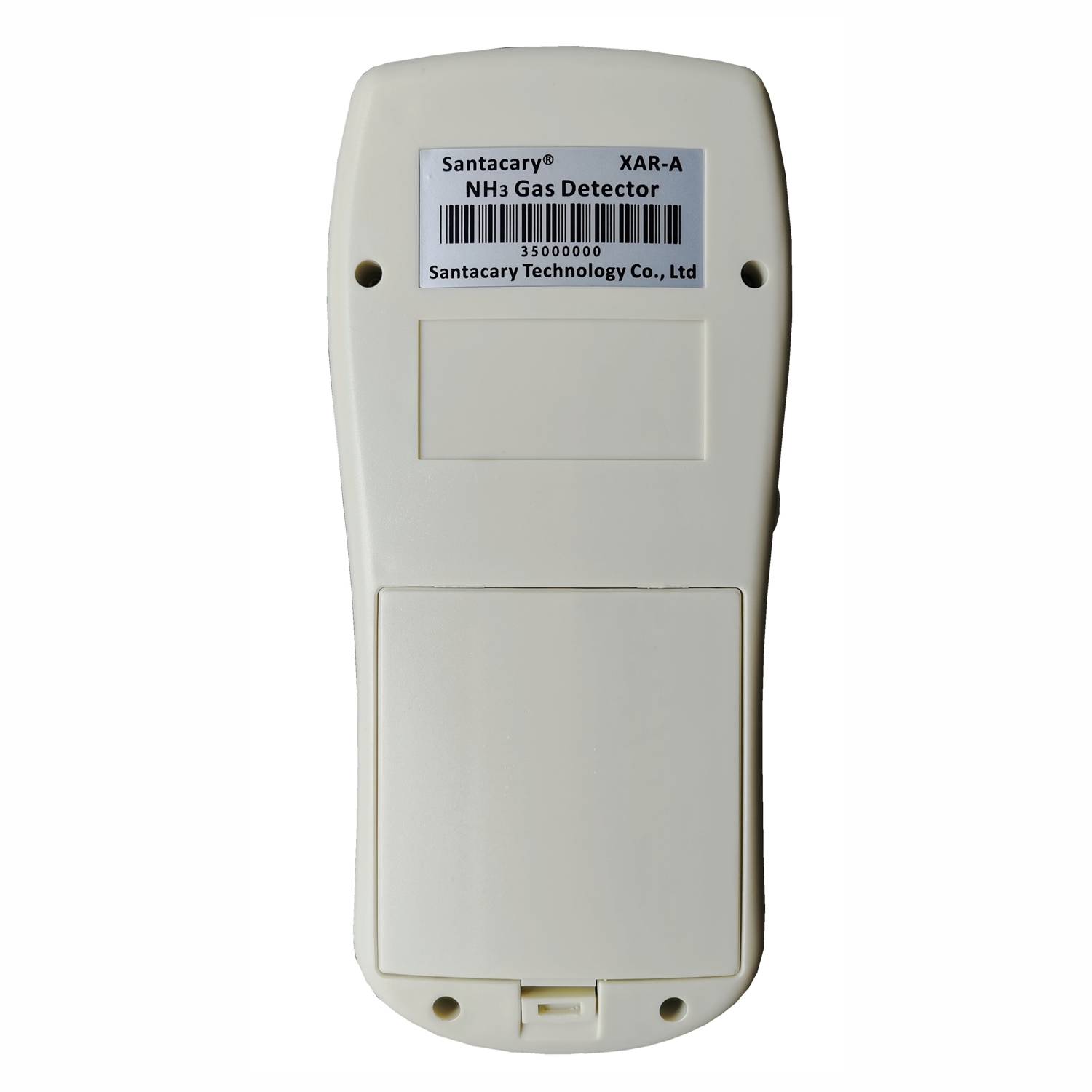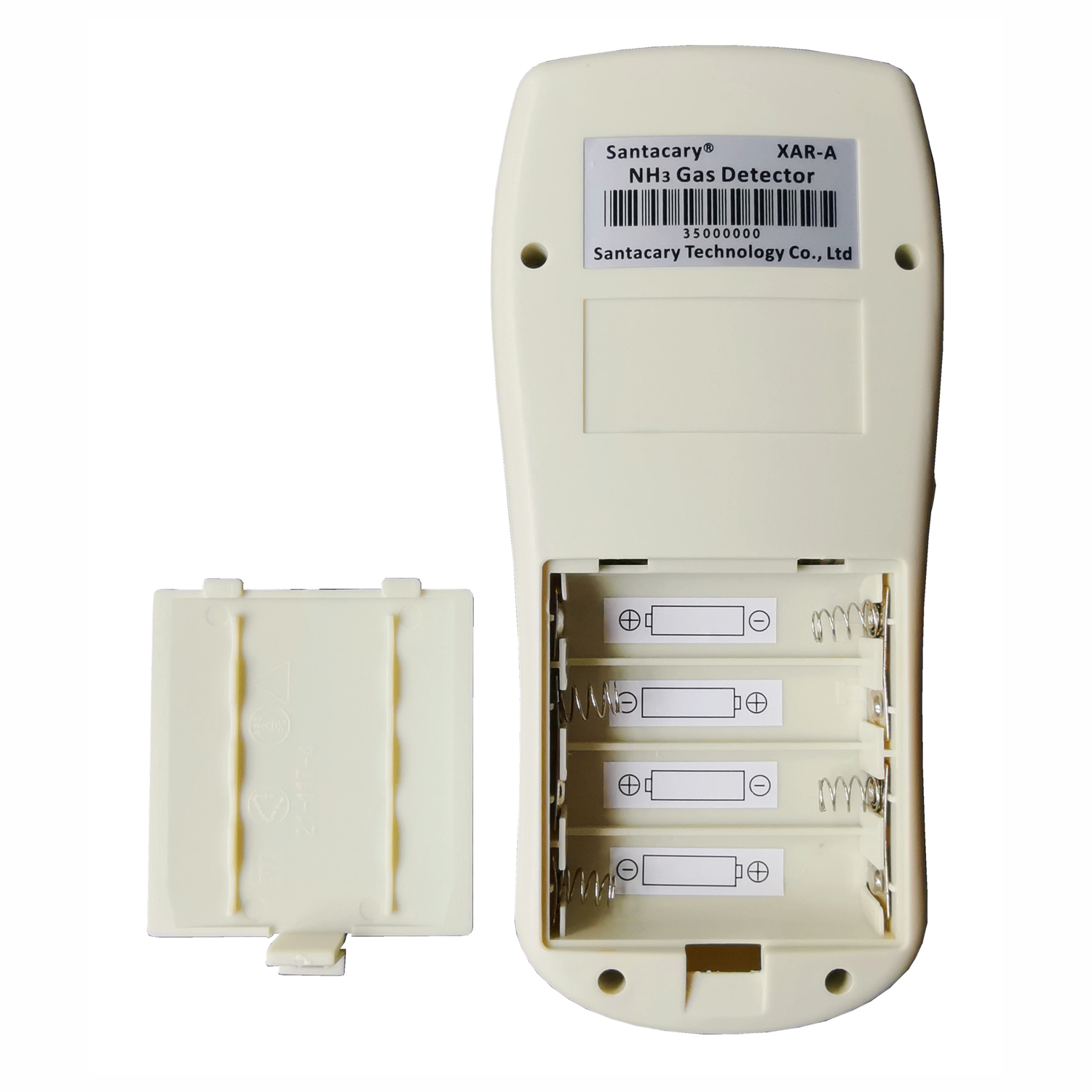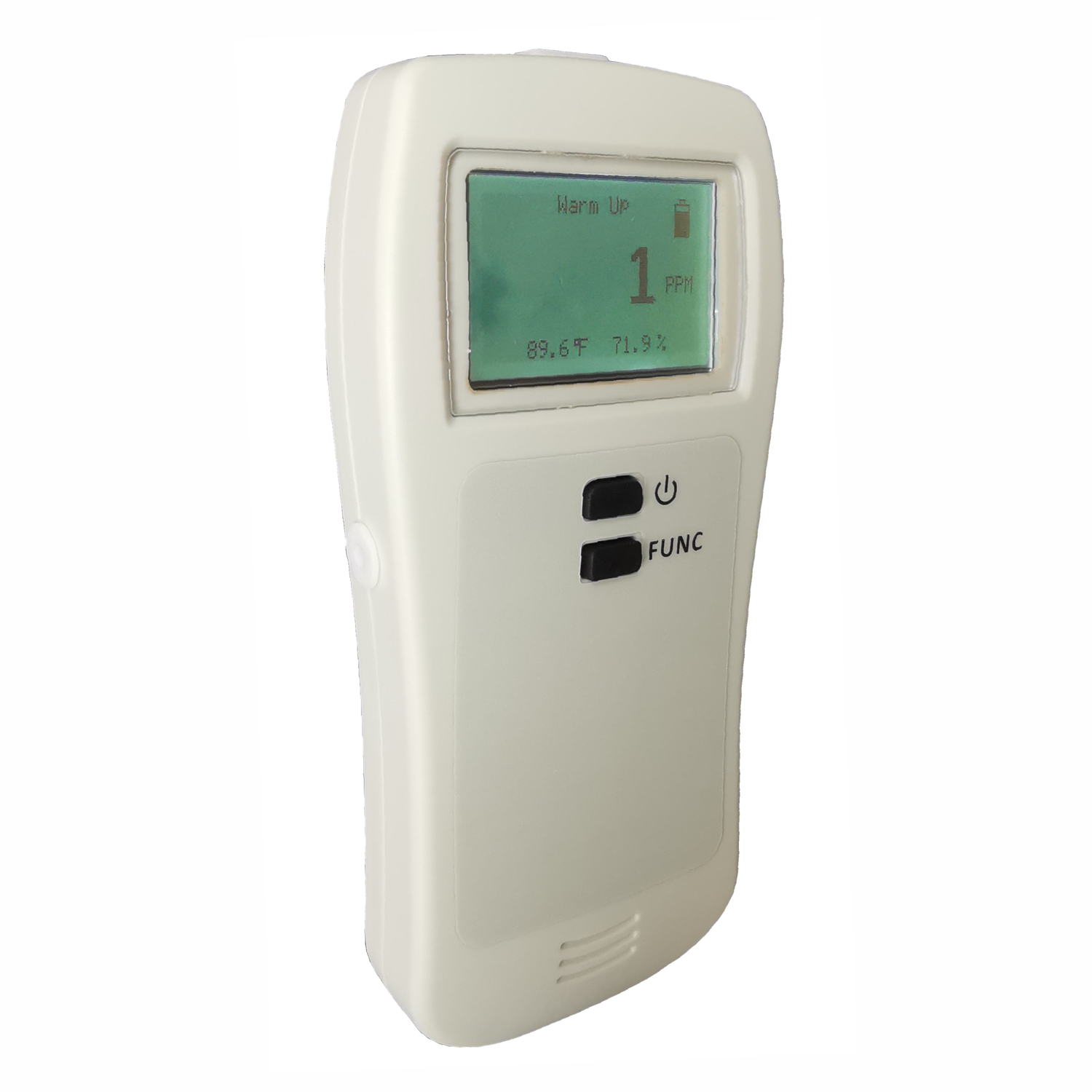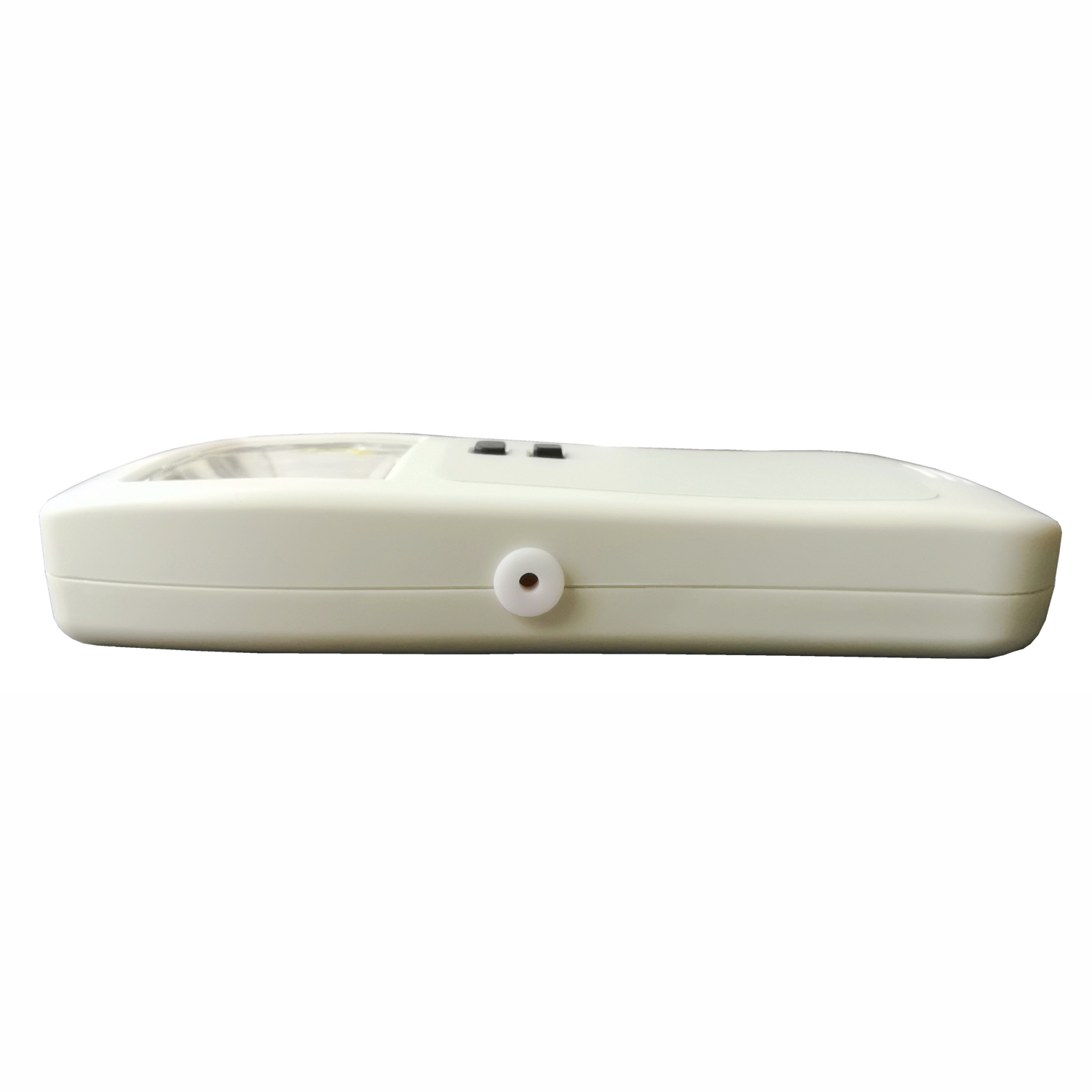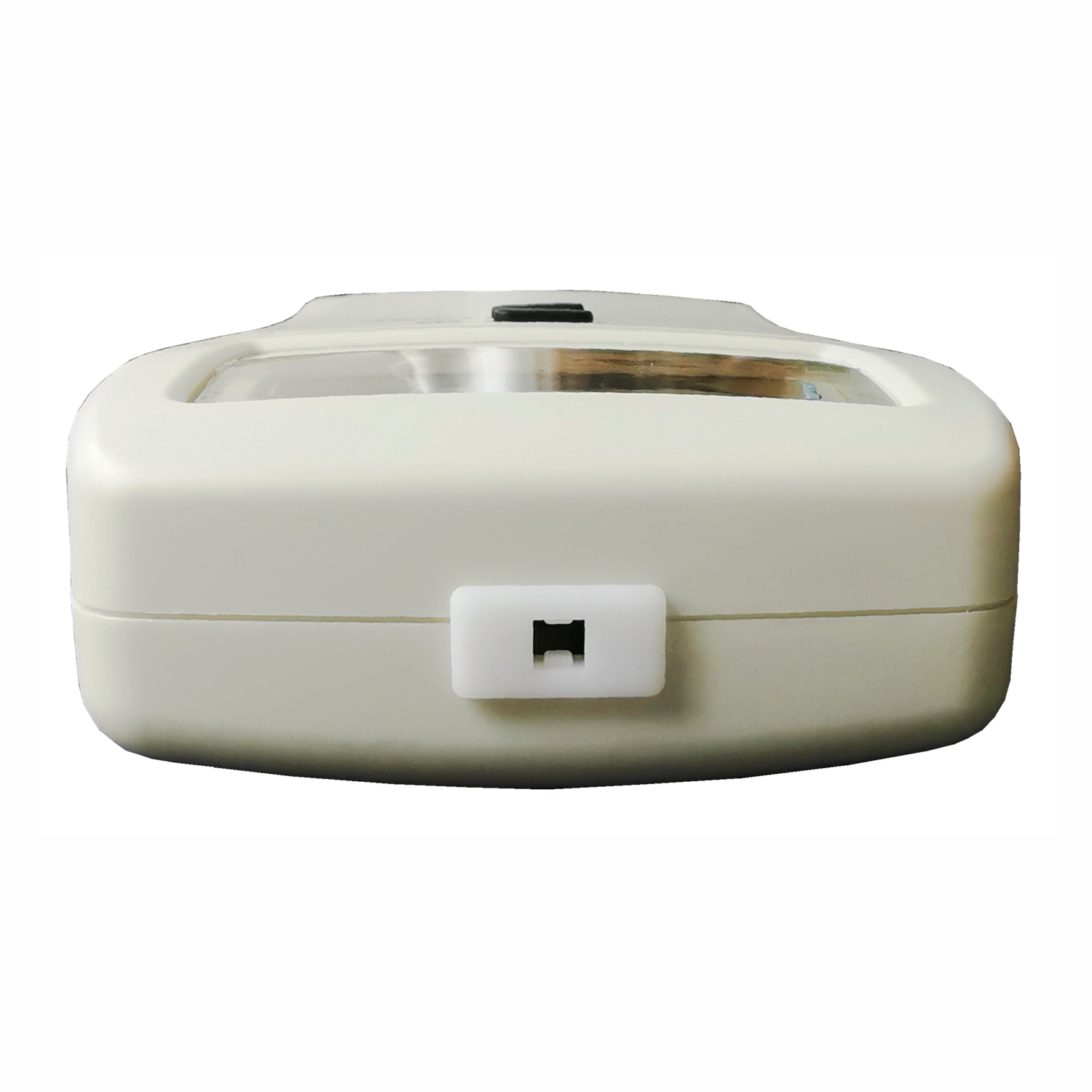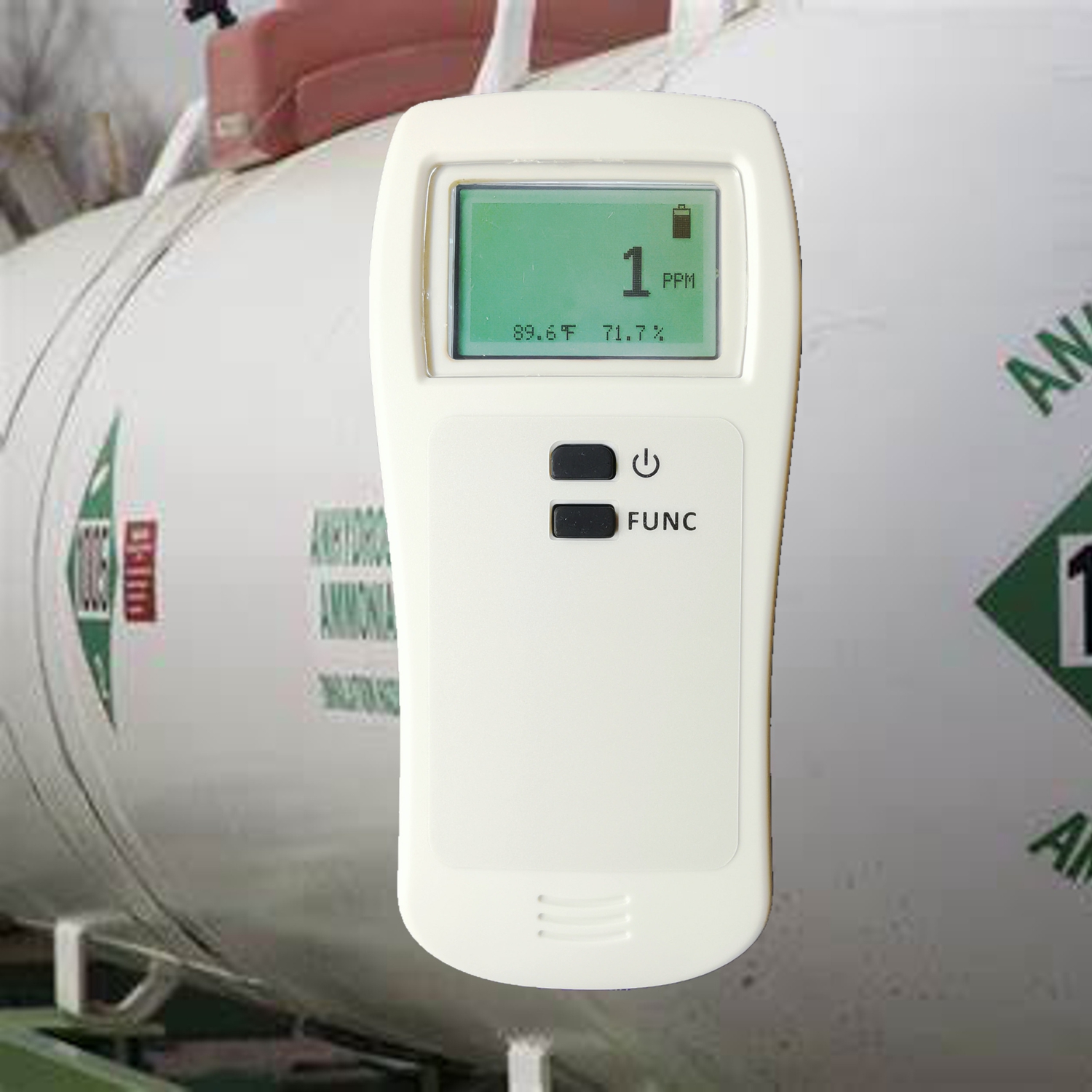XAR-A NH3 Gas Detector
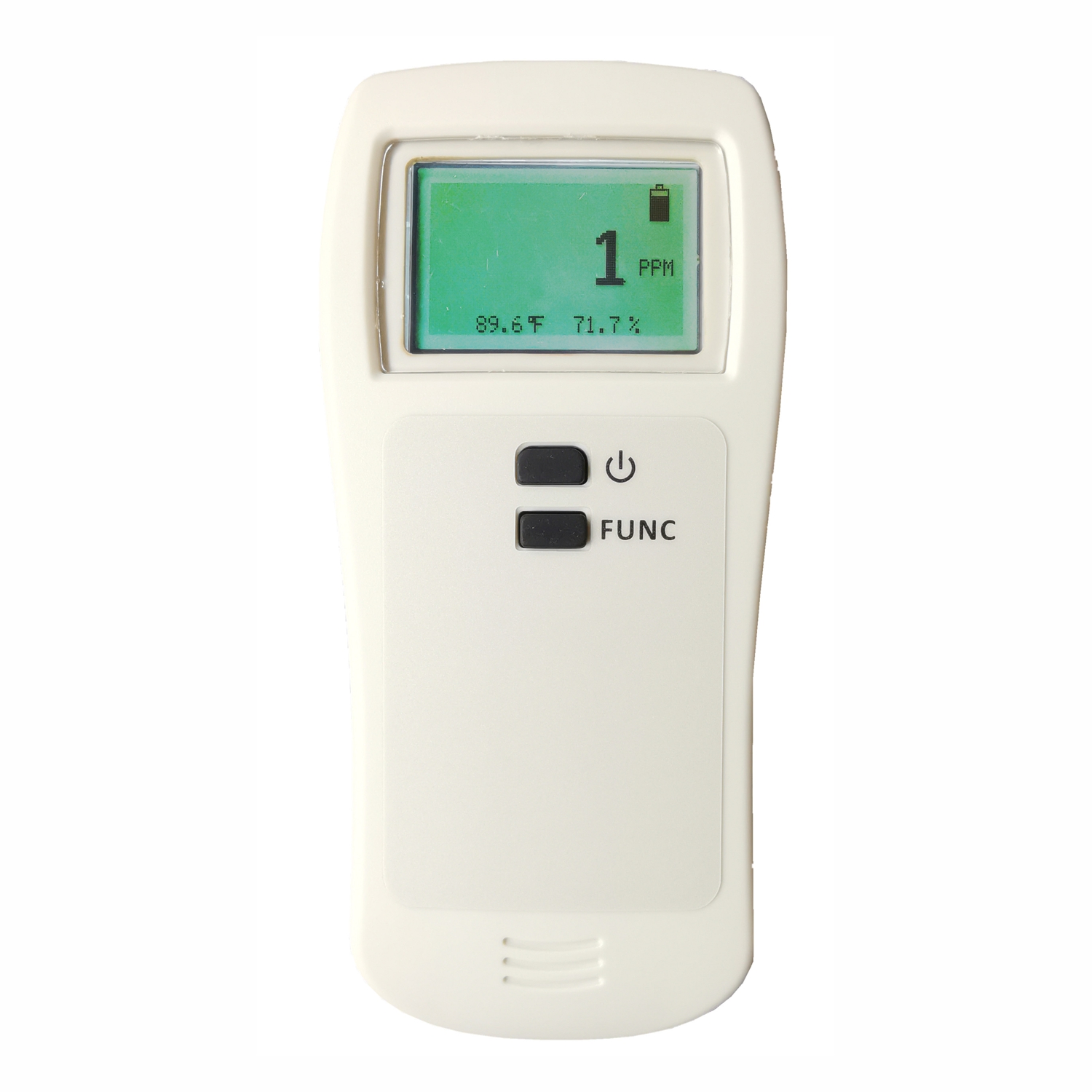
XAR-A NH3 Gas Detector
XAR-A NH3 Gas Detector
Santacary XAR-A is a precise gas detector for monitoring ammonia (NH3) in the ambient air and in the workplace. It has been designed to notify of the presence of NH3 gas.
Ammonia is a colorless gas or compressed liquid with an extremely pungent odor. It reacts violently with water and can seriously damage the skin, eyes and respiratory system. The XAR-A will continuously display the ambient concentration of ammonia and activate its audible alarms whenever the preset set points are exceeded.
XAR-A can be widely used in farms/poultry house, livestock and lab animal facilities, liquid ammonia plants, public toilets, septic tanks, loading rack and storage area, at the vaporizer, injection section and other locations near the ammonia fluid handling equipment, having significant leak probability. In farm, ammonia volatilization from poultry litter commonly causes a buildup of ammonia in the atmosphere of chicken houses that has a negative impact on both farm workers and birds. In industrial, ammonia has also been used for over a century as refrigeration gas and has no global warming potential or effect on the ozone level. The drawback of ammonia is the fact that it is very toxic with a pungent odour and, in high concentrations, can be flammable. In the above scenarios, XAR-A can be used to avoid unhealthy and accidents caused by ammonia produced in the workplaces.
Features
Portable NH3 gas detector
NH3 gas detector range: 0 ~ 500 PPM. Resolution: 1.0 PPM
Using world top brand 3-electrodes electrochemical ammonia sensors, high precision
Support zero and span calibration
One press to restore factory setting, free from the bother of mis-operation
Audible alarm
Two set points of instantaneous alarm
Trend chart display showing the past readings for NH3
Application in farms/poultry house, livestock and lab animal facilities, liquid ammonia plants, public toilets, septic tanks, loading rack and storage area near the ammonia fluid handling equipment etc.
With temperature and humidity measurement
Only two buttons and easy to operate
Four AA Alkaline Batteries
Theory of operation
The Santacary XAR-A Ammonia Gas Detector uses 3-electrode electrochemical technology, operating by the diffusion principle, for determining the concentration of ammonia in air samples. In diffusion mode, the atmosphere reaches the sensor by diffusing through the air sampling ports on beside and top of the detector. Normal air movements are enough to carry the sample to the sensor.
Device
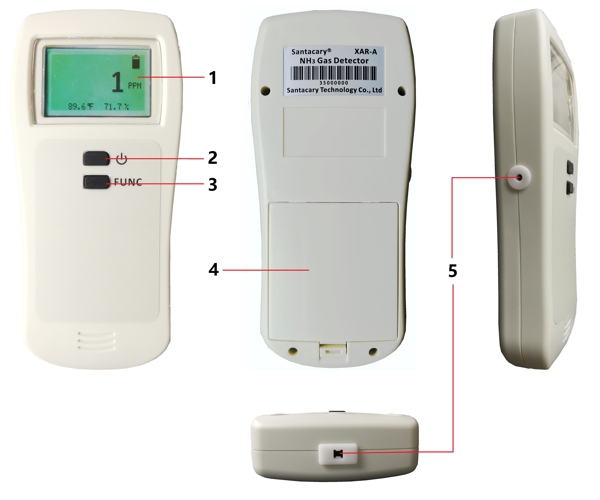
1. Liquid crystal display (LCD)
2. Power button
3. Function button
4. Battery compartment back cover
5. Air sampling ports
Alarm
Low Alarm and High Alarm
XAR-A has two alarm set points: High Alarm (NH3: 50 PPM) and Low Alarm (NH3: 25 PPM).These set points are factory set and cannot be changed. XAR-A is equipped with audio alarms to alert you when the ambient gas concentration exceeds one of the two alarm set point. When Ammonia value exceeds the defined high alarm set point (50 PPM), the audio alarm will sound at 3 beeps/sec. When Ammonia value exceeds the defined low alarm set point (25 PPM) but less than the defined high alarm set point, the audio alarm will sound at 2beeps/sec.
Factory Alarm Set points
Gas | Low | High |
NH3 | 25 PPM | 50 PPM |
Specifications
NH3 Sensor Specification:
Measurement Range | 0 ~500 PPM |
Resolution | 1.0 PPM |
Repeatability | 3% of signal |
Sample Method | Diffusion |
Temperature Range | -20 to 50°C (-4°F ~ 122°F) |
Humidity Range | 10 to 90%RH |
Response Time | <40 seconds |
Temperature Specification
Temperature Range | -10.0~60.0°C (14~140°F) display |
Display Resolution | 0.1°C (0.1°F) |
Display Options | °C/°F switchable |
Accuracy | ±0.5°C (±0.9°F) |
Response Time | 5~30 seconds (device must equilibrate with environment) |
RH Specification
Measurement Range | 0.0~99.9%RH |
Display Resolution | 1%RH |
Accuracy | ±4.5%RH |
Response Time | <8 seconds for 63% of step change |
General Specification
Operating | -10°C to50°C (14°F to 122°F),10~90% RH non-condensing |
Storage | -10°C to 60°C( 14°F to 140°F),<99% RH non-condensing |
Power Supply | Four AA Alkaline Batteries |
Dimensions | 75x165x25mm (2.95x6.49x0.98”) |
Weight | 125grams (4.41 oz.) without batteries |
Ammonia levels and consequences
Main known consequences of ammonia levels to poultry health:
Concentration (PPM) | Consequences of ammonia levels to poultry health |
10 | Trachea irritation (in turkeys) |
20 | Increased rate of infection of Newcastle disease vaccination |
25 | Impaired growth rate of feed conversion. Reduced final body weight |
Air sac inflammation | |
50 | Increased levels of kerato conjunctivitis |
100 | Increased chick mortality |
Ammonia levels to health effects
1. Ammonia levels in the air as low as 5 PPM can be recognized by odor. An average person detects ammonia by odor at around 17 ppm.
2. According to the World Health Organization (WHO), continuous exposure to 25 ppm of ammonia in the air does not result in a significant increase in blood levels of ammonia in the body.
3. According to the Occupational Safety and Health Administration (OSHA), the least amount of ammonia which is found to be irritating to the eyes, nose and throat of the most sensitive individuals is 50 ppm.
4. Because ammonia is present in the human body at all times, no long-term health effects from inhalation exposure to low levels of ammonia would be expected.
5. Because ammonia is a respiratory tract irritant, persons who are hyper reactive to other respiratory irritants, or who are asthmatic, may be expected to be more susceptible to inhalation of high concentrations of ammonia.
